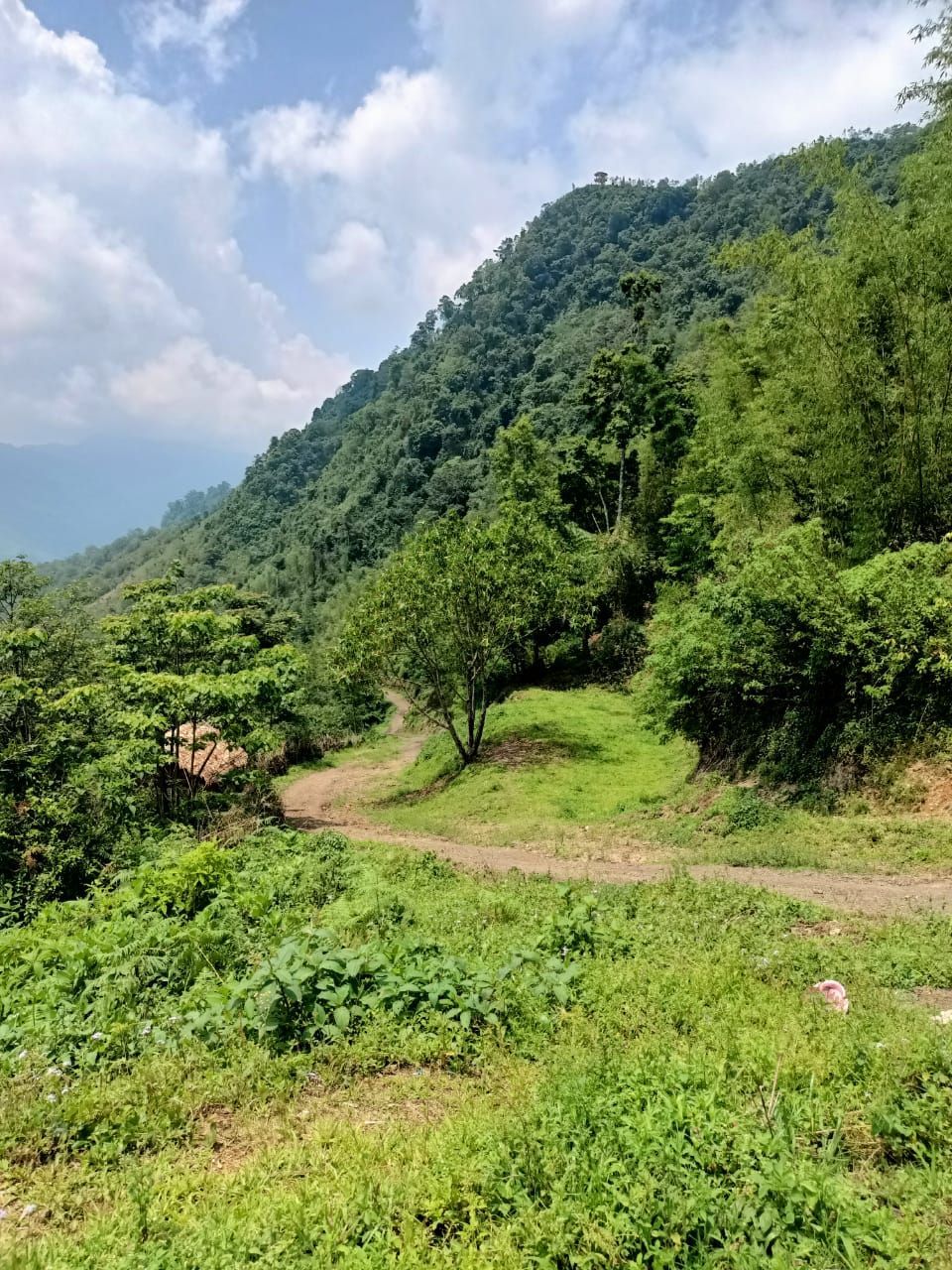A poppy cultivation in a Naga village inside Myanmar.

Morung Express News
Dimapur/Longwa | June 1
A disturbing scenario is unfolding at Longwa Village, Mon district, as transnational trafficking of the illicit drug known as Sunflower from Myanmar and addiction to it is taking a devastating toll on the community.
Residents of this village, which is situated along the Indo-Myanmar border, are grabbling with the destructive consequences of the surging drug epidemic leading to crime, addiction and social upheaval.
Once a serene village, with its residents boasting of dual citizenship of both India and Myanmar and attracting hordes of tourists year round, Longwa is now notoriously becoming a transit village of the sunflower drugs to the rest of the region and beyond.
The community is very well aware of the situation but remain helpless owing to a number of factors - being situated in a remote region with no or limited resources, close proximity to a porous border, lack of effective law enforcement and absence of advocacy.
“As a community, we are trying our best, but our efforts alone are not enough to eradicate this influx of drug trade and addiction,” Jeilei, Longwa Students’ Union president told The Morung Express.
Almost every day, volunteers from the students’ union and village council keep vigil on the pedestrians, vehicles travelling on the routes leading to Myanmar and from Longwa towards Pomching sub-division under Mon district.
But this alone is not enough, Jeilei says. According to the student leader, there are hundreds of kilometer stretches along the porous border that a trafficker can use to transport the contrabands. It is only at times, that certain arrest and seizures are made from their efforts. However, a major bulk of the drugs is surreptitiously transported to Longwa through the countless uncharted routes from Myanmar side from where it will travel to Mon town and beyond.
The students’ union leader also claim that they are keeping a tap of suspected drug peddlers from within their community and even has a list of names, but lack of concrete evidential support restrain them from taking any action.
On the other hand, with the mushrooming of the ‘internal carriers’ of the illicit drugs from within the community, situation has become more confounded and tracking all those transporting the contraband becomes humanly impossible. Jeilei says drug peddlers use the villagers on both sides of the border to transport the drugs by paying them money. The socio-economic condition of the remote region and lack of advocacy on the issue are also factors that lead to their involvement.
Trafficking route
With the Free Movement Regime (FMR) among the Nagas living on both sides of the border, Nagas from both sides can travel within 16 kilometers on both side of the border.
Imtiakum, a missionary working in Lui village, Chen area of Myanmar since 2018 revealed how sunflower drugs are procured from Taklang/Lahe Township under Sagaing division in Myanmar. From Longwa, there is only a two wheeling route towards the Myanmar side. It takes around 6 hours to reach Taklang and the ride passes through a number of Naga villages.
According to Jeilei, a packet/soap case of the sunflower drugs is reportedly procured by Rs 4-5 thousand in Taklang and once it reaches Mon town, it can cost around Rs 35-40 thousand or more. Many a times, the drugs are transported by ‘internal carriers’ from village to village until it reaches destination.
Believed to be the epicenter from where illicit drugs are produced, from Taklang, illicit drugs are also reported to be smuggled to Moreh town in Manipur.
Unprecedented addiction: From opium to sunflower
The accessibility and affordability of the substance has also fueled a growing addiction crisis among the villagers on both sides of the border.

“It is very distressing to see these innocent villagers becoming victims of sunflower drug addiction just when they are in the process of recovering from the onslaught of the opium (kani) addiction,” Imtiakum points out.
To curb the unprecedented addiction to opium which the Konyak community had been grappling for decades, in 2011 the community and the churches had huddled together and introduced cardamom to replace poppy cultivation among the villagers in Longwa area and inside Myanmar’s Naga villages. This was one of the targeted interventions besides sending users to rehabilitation and detoxification initiatives.
While opium consumption is still existent among the community, however the population of users and those cultivating poppy has reduced drastically, Imtiakum said adding that the arrival of sunflower at this juncture had brought in “another devil” much more menacing than opium.
Eradicating the drug trade and addressing addiction requires a multifaceted approach that encompasses law enforcement, healthcare, education and community involvement. For one, there are no rehabilitation facilities and qualified personnel to address the needs of those seeking recovery.
“When we talk of drug trafficking emerging from Longwa, we should recognize that the crisis is not confined to our village alone. From here, this drug spreads to the whole of Nagaland affecting one and all, particularly the youths,” Jeilei points out.
“We can’t fight this alone. We support of all sections- the government, churches, NGOs and individuals. We need to open our eyes to the gravity of the situation.”






